Raspored sjednica Vijeća Geološkog odsjeka u ak. god. 2024./25. i datuma predaje materijala za Povjerenstvo za nastavu nalazi se ovdje.
.jpg)
The "back-to-back" scientific visit to the Institut für Mineralogie und Kristallchemie, Universität Stuttgart (see previous post) for four-day (and night) measurements on Cameca SX-100 microprobe resulted with numerous images, point analyses, ages etc. The improvement of specific analytical skills regarding various type of instrument use and settings together with in situ U-Th-Pb age dating of accessory minerals (mainly monazites) significantly contributes to the goals of our project.
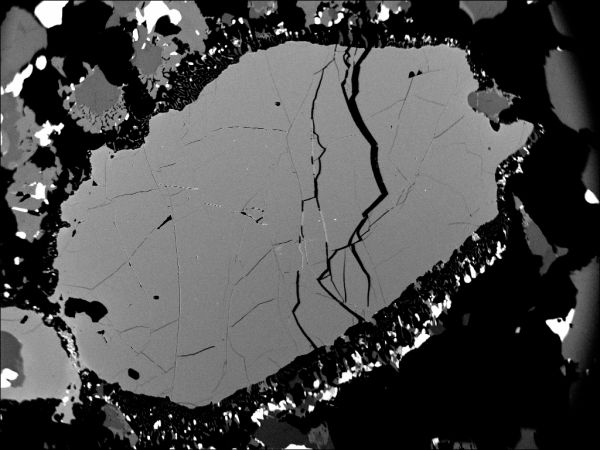
 |
 |
BSE image of garnet with symplectitic corona (upper image) and corresponding X ray compositional maps for garnet (bottom left for Mg; bottom right for Ca). Black to red colours indicate increasing element concentrations. The garnet bearing sample is part of metamorphic sole rock complex from the Dinarides.
Although the primary purpose of ad hoc visit was to perform joint Perple_X calculations on stability field(s) of alkali amphibole in our Slavonian samples - that was the problem that preoccupied and quite annoyed us for the last several months - HJM managed to prepare the following talks for the project members, students (mainly PhD level) and colleguaes.
BTW the “riebeckite problem” in our pseudosections is solved.
 Prof. Dr. rer. nat. Hans-Joachim Massonne (Institut für Mineralogie und Kristallchemie, Universität Stuttgart) project foreign coworker will give two talks during ad hoc visit to project IP-2014-09-9541:
Prof. Dr. rer. nat. Hans-Joachim Massonne (Institut für Mineralogie und Kristallchemie, Universität Stuttgart) project foreign coworker will give two talks during ad hoc visit to project IP-2014-09-9541:
---
How do continental plates collide? The controversy between numerical modeling and petrological results
18.5.2016., 16h, Mineraloško-petrografski zavod PMF-a, MPZ1, Horvatovac 95
Different scenarios of continent–continent collision have been proposed over the last decades for various orogens. Usually, a subduction of oceanic crust precedes this collision and an extended mountain range forms after the beginning of continent–continent collision by thickening of continental crust.
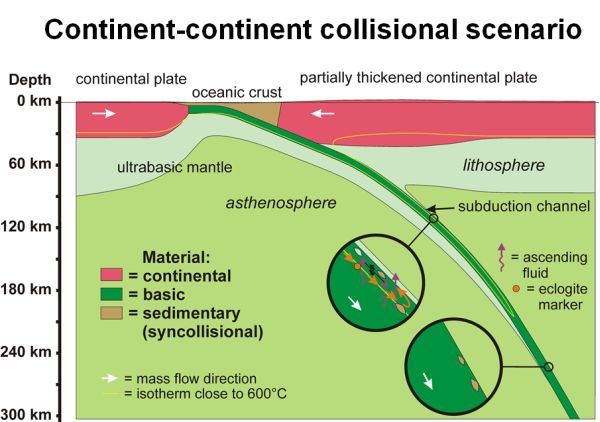
Problematic is, however, the orogenic process directly after the complete subduction of the oceanic plate, i.e. the processes during the contact of the colliding plates and shortly after. In principle, two end-member scenarios are conceivable both involving the separation of the downgoing oceanic plate from the adherent continental plate. This separation is explained by buoyancy forces of the continental plate which is relatively light compared to eclogitized oceanic crust and (dry) ultrabasic mantle.
---
Melting and fluid generation in subduction zones
19.5.2016., 11h, Mineraloško-petrografski zavod PMF-a, MPZ1, Horvatovac 95
At the beginning of continent–continent collision the descending plate dehydrates. The influence of this dehydration on the adjacent lithospheric mantle was studied with pressure (P), temperature (T) and T-H2O pseudosections calculated using the computer software PERPLE_X. These pseudosections were contoured by isopleths, for instance, for volumes of amphibole, chlorite, and serpentine. In addition, P–T pseudosections were considered for four psammopelitic rocks, common in the upper portion of the continental crust, in order to quantify the release of H2O in these rocks during prograde metamorphism. On the basis of the above calculations, different collisional scenarios are discussed highlighting the role of hydrated lithospheric mantle.

Session GD5.5/GMPV8.3/TS6.12
Orogenesis and geodynamics related to the collision of macro- and micro-plates
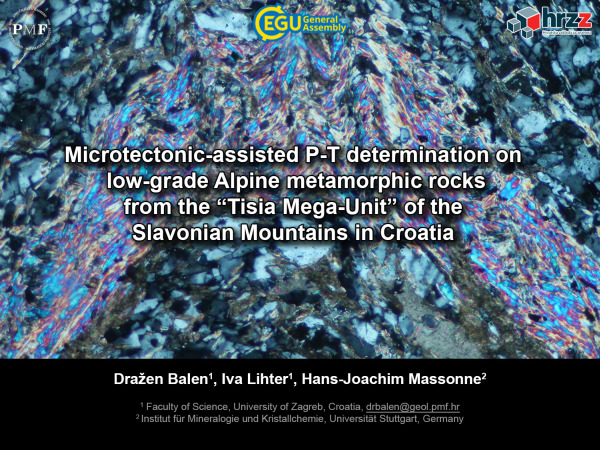
Oral presentation and numerous scientific contacts achieved in the Vienna. Even performed some experiments and fixed future co-operations with scientists from University of Vienna, Stuttgart and Bratislava. Presentation was under the title:
Dražen Balen, Iva Lihter and Hans-Joachim Massonne (2016): Microtectonic-assisted P-T determination on low-grade Alpine metamorphic rocks from the “Tisia Mega-Unit” of the Slavonian Mountains in Croatia. EGU General Assembly, EGU2016-4993, Vienna, Austria.
Few images outside well-known venue (taking photos inside is not allowed):
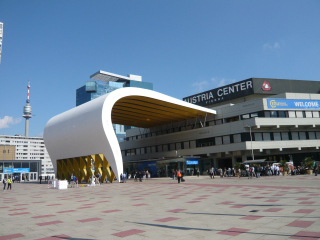 |
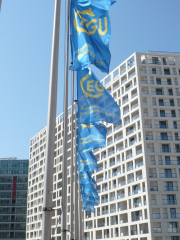 |
 |
 |
This spring field season starts and "continental" teams were deployed to Banovina, Moslavina and finally to prospection and reconnaissance trip in the central Bosnia. Since we are busy with preparation for EGU talk and while we are waiting for first scientific paper to be published update on blood, toil, tears and sweat (I am not kidding for a change, we did manage to destroy bunch of equipment, car parts and hurt ourselves on several extreme occassions) will wait a bit.
Since than, peek preview on magic Bosnia, more to come after Vienna:
UPDATE in the Field work section
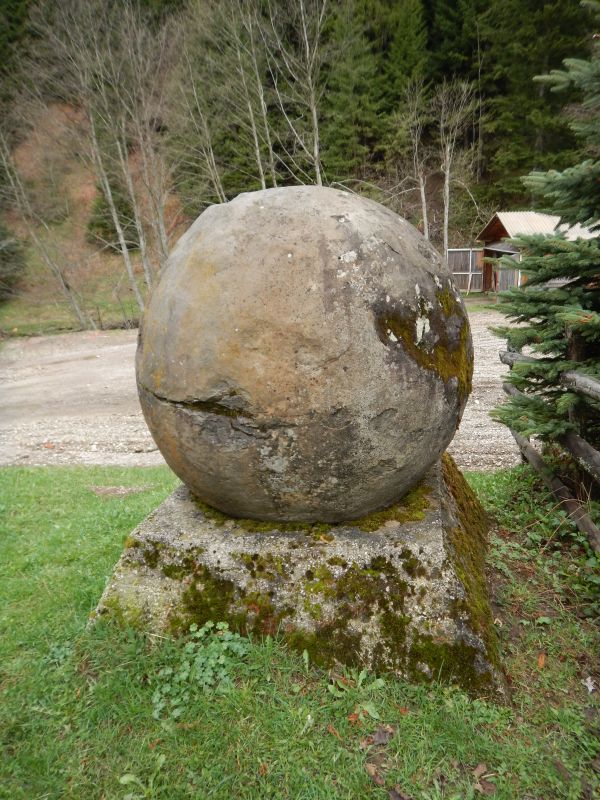
After almost half of year long trial and error attempts we managed (thanks to brown eyed girl - student Petra Schneider and firm hand of our lab wizzard Frane Marković) to separate a bunch of tiny zircon crystals from Cretaceous Slavonian red (hematite-bearing) granite. The small crystals are really minute (pass through 63 micrometers sieve) and quite temptation for our separation abilities. Crushing, sieving, heavy liquid procedure, magnet & home-made electromagnet based separation accompanied with final hand-picking using binocular lenses. However, in the near future we will have material for serious analyses in order to detect final geodynamic processes in the area during Cretaceous.

Petra works further on crystal morphology (zircon typology) which will be first step on the long way. What can be done with zircons you can read on www.wired.com popular science blog by Erik Klemetti.
How Tiny Crystals Can Tell Us the History of a Continent
Under the Volcano: How Crystals Record the Hidden Life of Lassen Peak and Chaos Crags
Or look movie at Science Bulletins: Zircons—Time Capsules from the Early Earth
 EGU 2016 Vienna
EGU 2016 Vienna Regarding the EGU General Assembly 2016, we are pleased to inform you that your following Abstract has been accepted and scheduled as Oral in Session GD5.5/GMPV8.3/TS6.12 - Orogenesis and geodynamics related to the collision of macro- and micro-plates: EGU2016-4993 Microtectonic-assisted P-T determination on low-grade Alpine metamorphic rocks from the „Tisia Mega-Unit“ of the Slavonian Mountains in Croatia by Dražen Balen et al.

"TSK, held for the first time in Tübingen in 1986, has a focus on tectonic processes. As the study of tectonic processes is by nature interdisciplinary, contributions from a wide range of disciplines dealing with tectonic processes are encouraged: structural geology, sedimentology, geophysics, metamorphic and magmatic petrology, geochronology, geomorphology, geodesy ... "

Our group presented new data on P-T conditions and metamorphic ages during Cretaceous evolution of metamorphic complexes in present Slavonian Mts. Talk given by head of project was warmly welcomed by the audience. Title of the talk:
Dražen Balen, Iva Lihter, Bruno Tomljenović, Hans-Joachim Massonne (2016): Microtectonic and geothermobarometric constraints on Alpine metamorphism of low-grade schists from the Slavonian Mts., Croatia. 16th Symposium Tectonics-Structural Geology-Crystalline Geology, TSK16 Abstracts, 10-10, Bonn, Germany, 2. 3. - 6. 3. 2016.
A few images from Bonn and fantastic venue at Poppelsdorfer Schloss:
 |
 |
 |
 |
 |
 |


Hour-glass zoning pattern, chloritoid, Stari potok, Medvednica
Ivan Mišur, PhD student from Croatian Geological Survey, presented thesis plan and data that are partly collected in the frame of HRZZ IP-2014-09-9541 project.
Ivan Mišur, Mirko Belak & Dražen Balen (2016): Metamorfna evolucija kloritoidnih škriljavaca niskog stupnja metamorfizma na Medvednici. Simpozij studenata doktorskih studija PMF-a, Knjiga sažetaka, 64-65, Zagreb.
Well done, Ivane!
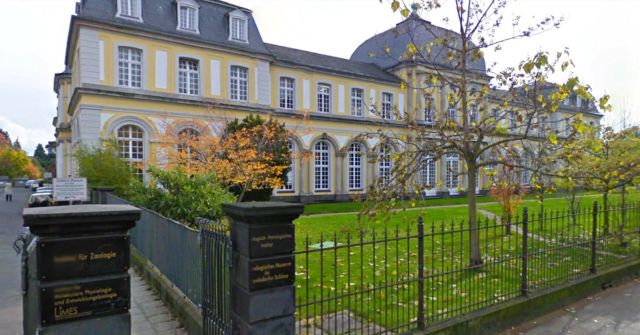
Poppelsdorfer Schloss @ Google Earth
...
March 4
9.40: Dražen Balen, Iva Lihter, Bruno Tomljenović, Hans-Joachim Massonne: Microtectonic and geothermobarometric constraints on Alpine metamorphism of low-grade schists from the Slavonian Mts., Croatia.
...
Meeting folowed by vivid discussion of project members in the lecture room of Division of Mineralogy and Petrology pointed out the highlights of first half year of the reasearch. Short talks about developments on work of "platform", "basin" and "crystalline" groups were presented by Maja Martinuš, Borna Lužar-Oberiter and Dražen Balen.
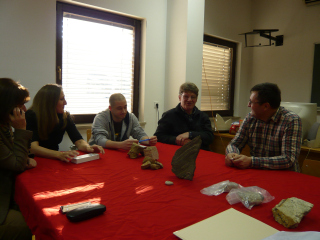 |
.jpg) |
 |
 |
 |
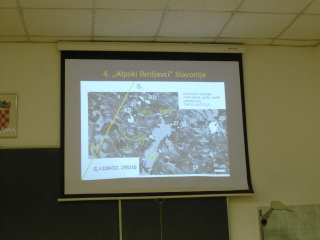 |
Age dating story of Alpine accessory minerals starts here as ... "The beginning of a beautiful friendship". U-Th-Pb age dating on Cameca SX-100 electron microprobe shows everything that we hope for. Well, not exactly a wish-list for Christmas, but one that is close enough!
View of computer screens during measurement on the electron microprobe

EDS monazite spectra (raw data)
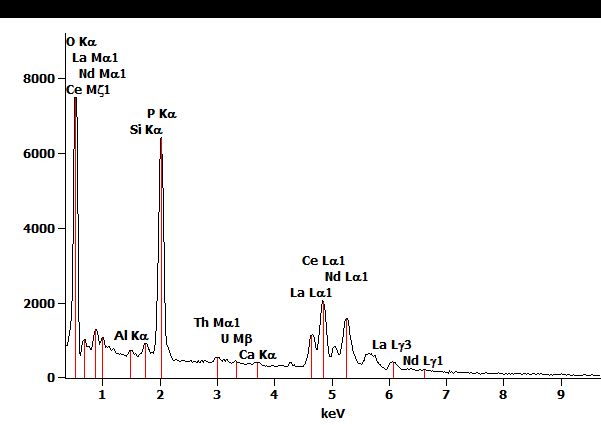
Statistical (pre)view of age data obtained on monazites

Crystalline group performs an experiment on tourmalines using Raman spectroscopy.

That follows the set of previously conducted IR spectroscopy experiments. Specific parts of IR spectra point to the water content in mineral structure which is of crucial importance from the aspect of igneous evolution during Cretaceous period in the present Pannonian Basin basement. Hopefully, details of petrogenetic evolution will shed light on the geodynamics in this period.
Glimpse of the IR spectra can be seen below:


Thoughts about ideas and first months of research on the HRZZ funded research project IP-2014-09-9541 Cretaceous GEOdynamic PROOFS in the Dinarides and Pannonian Basin (Kredni geodinamski dokazi u području Dinarida i Panonskog bazena) from the Head of project prof. dr. sc. Dražen Balen transmitted through national radio network (3rd programme of Croatian radio).
Click on above image for archive - Znanstveni koncentrat.
"O novom istraživanju "Kredni geodinamski dokazi u području Dinarida i Panonskog bazena" govori dr. sc. Dražen Balen, o novoj knjizi "Hrvatska kemija u 20. stoljeću" dr. sc. Snježana Paušek Baždar, a o tome kako se i zašto stvara umjetno more dr. sc. Gordan Grgurić."
EMITIRA SE:
16.11.2015 13:00
 |
Following this summer reconnaissance field work, all teams will continue to work at the selected localities using more detailed approach. Brač and Dubrovnik surroundings are targets for carbonate team, Banovina for clastic team and Slavonia, followed with Moslavina, is target for hard-rockers. |
What is common denominator?
Overlapping Cretaceous events recorded in the different environments!
First thin sections and analyses from carefully selected outcrops at Brač Island gave us absolutely fantastic results! Important catch of our “small-beast hunter” (BCT) exposes newly discovered benthic foraminifera from the Lower Campanian of Brač Island. Hopefully, newly discovered foraminifera will enter in publication process soon. Some of them are named in honor after our noticeable geologists (Ivan Gušić and Vladimir Jelaska). Up to the end of September we should have:Rectochrysalidina gusici n.gen. n.sp., Lituolipora? jelaskai n.sp.,Cribrovoloshinovella n. gen., n. sp.?! and perhaps new orbitolinids. The hunt is still on.

First presentations are just behind us. Some team members are still on the road. We are all tired but also excited. Impressions - quite OK, fine, excellent...:
The principal investigator of GEOPROOFS project prof. dr. Dražen Balen will give a keynote lecture at 5th Croatian Geological Congress (http://kongres2015.geologija.hr/). The lecture is entitled “Repetitio est mater studiorum: Do the orogeneses repeat their P-T patterns through the metamorphism in the Slavonian Mts. (Tisia Mega-Unit)?” and among other data will present the first results of ongoing Croatian Science Foundation (HRZZ) project in a part regarding Alpine event.
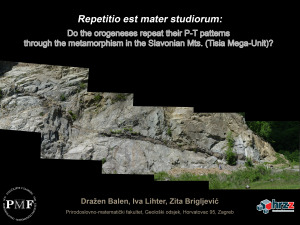
This work has been supported in part by Croatian Science Foundation under the project IP-2014-09-9541.
 |
During the summer season all field teams prospect and probe perspective localities at:
|
Is it pleasant in the field at the moment enjoying this hard-boiled egg conditions? Not at all! But, you know ... "We shall fight on the beaches, we shall fight on the landing grounds, we shall fight in the fields and in the streets, we shall fight in the hills. We shall never surrender!".
Photos and first results soon. Who survive will blog and/or tweet!
Kick-off meeting of project HRZZ IP-2014-09-9541 „Cretaceous GEOdynamic PROOFS in the Dinarides and Pannonian Basin“ held on July 2nd at Division of Mineralogy and Petrology, Faculty of Science.
A few images from meeting: